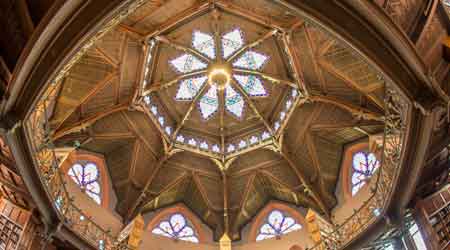Princeton Relies on Established Manufacturers for LED Retrofit Program
Part two of a four-part article on Princeton University's LED upgrade
The diverse and wide-ranging scope of the lighting upgrade program has allowed Princeton to experiment with many different products and manufacturers to find the right matches for each application.
“I think the process was trial and error at first,” says Mike Morris, special facilities supervisor for operations department and grounds and buildings maintenance. “It’s an ever-changing market as far as the fixtures, the type, and how they operate, so initially it was about working with the engineering department to figure out what was going to work for us.
“Once things settled down and we found the proper fixtures and lamps, it was just a matter of scheduling and changing the lamps.”
Princeton placed a heavy emphasis on working with established manufacturers and products with extended warranties.
“We wanted to minimize risk,” Robertson says of focusing on top manufacturers. “There are so many companies with LED products, and every single day some of these same companies go out of business. We didn’t want to take that risk. We focused on the large manufacturers that had tested, researched, and developed their products, and we had a reassurance that if something failed, they would fix the problem, even if on a massive scale. If we are installing 100,000 T8 lamps, we had to know that tomorrow that company wasn’t going to go away and that their warranty wasn’t going to be void.”
Still, the facilities team did not close the door on smaller, innovative companies introducing new technologies.
“We didn’t want to exclude the small guys and be close minded, so on a regular basis we’re open to smaller and newer companies with new technologies. We test them first on a small scale, before we implement their products on a larger scale,” Robertson says.
Color choice also was an important part of the specification process.
“Our university standard now for exterior fixtures is 3,000 Kelvin,” Robertson says. “Everywhere else, general spaces and classrooms are 3,500 Kelvin, (and) labs are 4,100 Kelvin. It seems like with LEDs, there is more blue in the actual color of the LED lamp when compared to the same spec fluorescent product. Because we find that many LED products' color temperatures are cooler than their spec states, our 3,500 Kelvin standard may change and we may begin to start putting in 3,000 Kelvin lamps.”
Related Topics:















